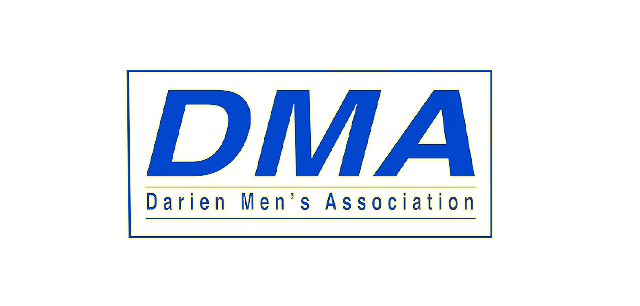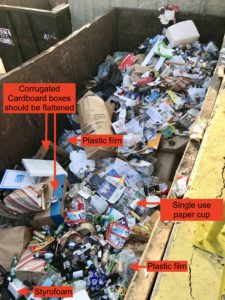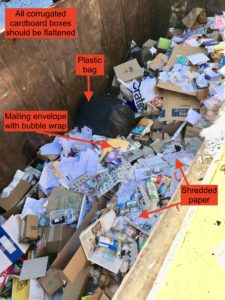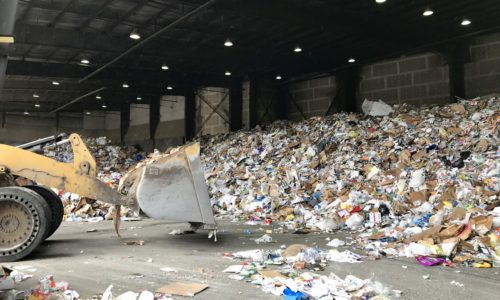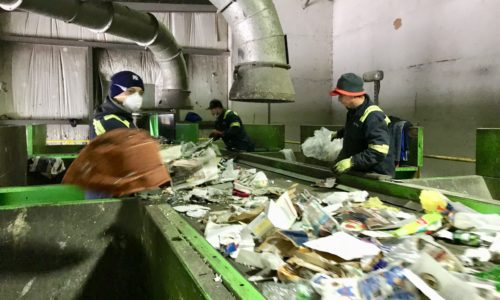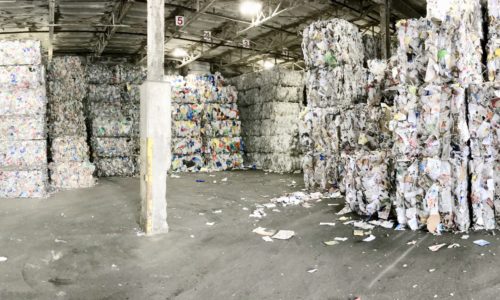Category: Activities (Page 17 of 33)
Activities are gatherings that occur on a regular schedule, usually weekly, to enjoy a specific pastime.
 The #1 New York Times bestselling author of The Devil in the White City and Dead Wake delivers a fresh and compelling portrait of Winston Churchill and London during the Blitz On Winston Churchill’s first day as prime minister, Hitler invaded Holland and Belgium. Poland and Czechoslovakia had already fallen, and the Dunkirk evacuation was just two weeks away. For the next twelve months, Hitler would wage a relentless bombing campaign, killing 45,000 Britons. It was up to Churchill to hold the country together and persuade President Franklin Roosevelt that Britain was a worthy ally-and willing to fight to the end. In The Splendid and the Vile, Erik Larson shows, in cinematic detail, how Churchill taught the British people “the art of being fearless.” It is a story of political brinkmanship, but it’s also an intimate domestic drama set against the backdrop of Churchill’s prime-ministerial country home, Chequers; his wartime retreat, Ditchley, where he and his entourage go when the moon is brightest and the bombing threat is highest; and of course 10 Downing Street in London. Drawing on diaries, original archival documents, and once-secret intelligence reports-some released only recently-Larson provides a new lens on London’s darkest year through the day-to-day experience of Churchill and his family: his wife, Clementine; their youngest daughter, Mary, who chafes against her parents’ wartime protectiveness; their son, Randolph, and his beautiful, unhappy wife, Pamela; Pamela’s illicit lover, a dashing American emissary; and the cadre of close advisers who comprised Churchill’s “Secret Circle,” including his lovestruck private secretary, John Colville; newspaper baron Lord Beaverbrook; and the Rasputin-like Frederick Lindemann. The Splendid and the Vile takes readers out of today’s political dysfunction and back to a time of true leadership, when-in the face of unrelenting horror-Churchill’s eloquence, courage, and perseverance bound a country, and a family, together.
The #1 New York Times bestselling author of The Devil in the White City and Dead Wake delivers a fresh and compelling portrait of Winston Churchill and London during the Blitz On Winston Churchill’s first day as prime minister, Hitler invaded Holland and Belgium. Poland and Czechoslovakia had already fallen, and the Dunkirk evacuation was just two weeks away. For the next twelve months, Hitler would wage a relentless bombing campaign, killing 45,000 Britons. It was up to Churchill to hold the country together and persuade President Franklin Roosevelt that Britain was a worthy ally-and willing to fight to the end. In The Splendid and the Vile, Erik Larson shows, in cinematic detail, how Churchill taught the British people “the art of being fearless.” It is a story of political brinkmanship, but it’s also an intimate domestic drama set against the backdrop of Churchill’s prime-ministerial country home, Chequers; his wartime retreat, Ditchley, where he and his entourage go when the moon is brightest and the bombing threat is highest; and of course 10 Downing Street in London. Drawing on diaries, original archival documents, and once-secret intelligence reports-some released only recently-Larson provides a new lens on London’s darkest year through the day-to-day experience of Churchill and his family: his wife, Clementine; their youngest daughter, Mary, who chafes against her parents’ wartime protectiveness; their son, Randolph, and his beautiful, unhappy wife, Pamela; Pamela’s illicit lover, a dashing American emissary; and the cadre of close advisers who comprised Churchill’s “Secret Circle,” including his lovestruck private secretary, John Colville; newspaper baron Lord Beaverbrook; and the Rasputin-like Frederick Lindemann. The Splendid and the Vile takes readers out of today’s political dysfunction and back to a time of true leadership, when-in the face of unrelenting horror-Churchill’s eloquence, courage, and perseverance bound a country, and a family, together.
Hugh Seaton recently sold his VR company, and he is focused on practically apply advanced technologies for years. He has led teams that have built Artificial Intelligence products, founded the Practical AI meetups in NYC and San Francisco, and successfully launched an AI startup aimed at construction companies. Hugh will discuss AI, and automation from the front lines, including from China, where he spent over nine years of his career.
Chip and Stuart Weismiller Everyday Entrepreneur Venture Fund https://www.
- ratings agencies
- attracting young employees
- consumer boycotts
- government regulations
- investor divestitures
- carbon taxes
- real estate
- muni bonds
- insurance
- PSGE was bankrupted by the fires. Unimaginable a couple of years ago.
- I was in Council Bluffs last fall. The spring floods never receded. Farmers couldn’t plant, hence could pay their taxes. Yet the municipalities have the fixed costs of schools, police, etc.
- Think of the cost of rebuilding roads, airports, ports. All the NY airports are on low ground.
- Blackrock’s & others new ESG funds.
No matter what you believe about climate change, it will impact your portfolio.
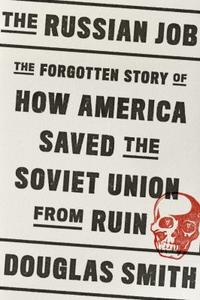 THE RUSSIAN JOB by Douglas Smith |
THE RUSSIAN JOB by Douglas Smith |
Kirkus Reviews
The hair-raising account of a great humanitarian act in which the United States provided vital assistance to the Soviet Union. Historian and translator Smith (Rasputin: Faith, Power, and the Twilight of the Romanovs, 2016) reminds readers that World War I and civil war devastated Russian agriculture because the fighting armies lived off the land. By 1920, the Bolsheviks had largely won, but the government continued to forcibly extract grain from the peasants. Then the rains stopped. At first, Lenin “welcomed the famine, since he believed it would destroy the people’s faith in God and the tsar. Revolution, not charity, would save the peasants, he said.” By the summer, faced with mass starvation and violence, he changed his mind. Many philanthropists and international charities responded to pleas for help, but only one organization had the immense resources required: the American Relief Administration, led by Herbert Hoover, who had already impressed the world with his relief of mass starvation in Belgium and northern France during WWI and then again in Europe after the armistice. A successful businessman, Hoover employed the same talents to organize a vast enterprise led by loyal underlings who oversaw the distribution chain, from docks to warehouses to transportation to the soup kitchens. A few Soviet leaders were congenial, but most believed that the ARA was a nefarious capitalist plot. Secret police harassed the Americans and arrested Russian employees but sometimes, unpredictably, helped by cutting through red tape. Local officials were usually grateful. Infrastructure, housing, sanitation, and disease were terrible, far worse than in Europe. In an often agonizing but necessary book, the author includes letters and anecdotes by participants as well as often horrific photographs, all of which tell a grim story. Starving people do not overthrow governments, so it’s unlikely American aid saved the Soviet Union, but it was a magnificent achievement—and Smith adeptly navigates all elements of the story. Except for Hoover biographers, American scholars pay little attention to this episode; it quickly vanished from Russian history. Although the catastrophic Russian famine and American relief efforts are not completely forgotten,
this expert account deserves a large readership.
8:30am, Lilian Gade Room at the DCA.
Cliff van Voorhees and Carolyn Bayne will discuss the challenges of recycling in Darien.
Introductory slide show.
Examples of what should and should not be in single stream recycling:
Click below to see what’s allowed and not allowed in Darien Single Stream. Just because it isn’t listed here, doesn’t mean it can’t be recycled – there are separate areas for paint, lightbulbs, batteries, electronics, tires, appliances, food waste, metal, large plastic, yard waste, mattresses, clothes, corrugated, plastic bags, construction debris, … And the Swap Shop is a way to recycle usable stuff. (Or gain more clutter you don’t really want.) You can also pick up shredded mulch, leaf compost, and sometimes food compost.
2019_Darien_Single_Stream_Recycling_(Full_List)
A tour of City Carting Recycling Center. (hover over picture to stop scrolling)
Commercial Haulers
The haulers separate trash from SSR, even though many people seem to think they do not. I believe they do for two main reasons:
- it’s the law and their licenses could be revoked if they are found in violation;
- Darien charges haulers to tip MSW but not SSR. Free tipping of SSR is an incentive to separate – and recycle – SSR. We are one of the few remaining municipalities that continues to get paid for SSR, but that could change when our contract is renegotiated.
It’s also worth noting that the haulers are only required to recycle what goes in the blue bin (ie our SSR list); many of the other items we recycle (ie batteries, light bulbs, e-waste, paint, etc.) must be brought to our facility. We ALWAYS recommend that residents who employ a hauler also get a dump sticker so that they can recycle these additional materials; their permits are priced much lower to account for the fact that they are primarily bringing recyclables and not regular household trash. Note that Seniors can get a free permit.
CT’s problem with waste from “Hartford Current:”
https://www.courant.com/news/connecticut/hc-news-ct-outofstate-trash-disposal-20191228-hprk52k2hjbzlj7xz2lztug74q-story.html
Economics and Science of Recycling from “Popular Mechanics” (note date is 2008 before China’s ban on imports):
https://www.popularmechanics.com/science/environment/a3752/4291566/
Problems with Recycling in Asia from the “Financial Times:”
https://www.ft.com/content/360e2524-d71a-11e8-a854-33d6f82e62f8
Micro-plastics and their effects on humans from “The Conversation:”
https://theconversation.com/we-are-guinea-pigs-in-a-worldwide-experiment-on-microplastics-97514
Recycling facts from Recycle Across America:
https://www.recycleacrossamerica.org/recycling-facts
CT’s Policies from the CT Mirror.
https://ctmirror.org/2020/02/17/is-connecticuts-outdated-recycling-system-in-line-for-an-overhaul/?utm_source=Connecticut+Mirror+Mailing+List&utm_campaign=b6d6010e90-DAILY_BRIEFING_MORNING&utm_medium=email&utm_term=0_571d22f8e4-b6d6010e90-68155097
Access Code: 132-263-437
Please join my meeting from your computer, tablet or smartphone.
https://www.gotomeet.me/
Business Roundtable—Purpose of a Corporation
Pre- August 2019 Maximize Shareholder Value
Corporate Responsibility per Milton Friedman
1970 essay- Maximize Returns to Shareholder
Friedman’s thesis: Corporations are not to make contributions for
“social causes”, shareholders can choose what to give.
Further- Corporations are to obey all laws and regulations.
If corporations make “contributions”, the directors must
conclude such donations create good will and enhance sales.
Current example: Orvis gives 5% of pretax profits for “environmental
causes”. (Could they give 15%?
Comments from Harvard Law School Forum
Re: Business Roundtable Statement on Corporate Mission
Corporate Directors have a fiduciary duty to act in shareholder interest
Thus, decisions not in shareholder interest are illegal
Actions taken by directors will be presumed to be in shareholder interest or they would not be taken.
Directors must adhere to the law so that new Legislative mandates may promote or presume to benefit other stakeholders, but at a cost to shareholders.
Overall question: To what extent do we desire the government to impose
rules that will decrease business profits in order to strive for other benefits
What does the Business Roundtable expect or hope to change with revised statement of purpose?
Former “purpose”: “Maximize shareholder Value”
New “purpose”: “Act to benefit all stakeholders”
Stakeholders: customers, employees, suppliers, communities, and shareholders
Possible intentions:
Change corporate reporting on selective topics?
Motivate investments into areas not directly in shareholder interest?
Motivate shareholder resolutions on new corporate action
Bring about new government rules on business actions
Potential areas of Government mandates: ESG
(Environment, Social, Government)
Action regarding global warming;
Other environment improvement measures
Reduction of income inequality
Increase diversity in management personnel
Impose unnecessary costs for named investments
Establish more “days off” for employees
From the WSJ. Financial Advisers Turn to ESG, Warily – WSJ
IEA warns oil companies doing nothing on emissions is not an option
https://eresearch.fidelity.com/eresearch/goto/evaluate/news/basicNewsStory.jhtml?symbols=XOM&storyid=202001191929RTRSNEWSCOMBINED_KBN1ZJ005-OUSBS_1
Capitalism, Alone’ Review: Inclined Toward Inequality
Capitalism Alone
https://lucidmanager.org/milton-friedman-corporate-social-responsibility/
https://corpgov.law.harvard.edu/2019/09/26/analysis-of-the-business-roundtable-statement/
https://www.coursehero.com/file/8478280/Purpose-of-the-Corporation/
The Davos Crowd Embraces Big Global Government – WSJ
State of the Markets: The Rise of the Private Equity Industry
Bruce Lynn: Discussion Leader
According to a recent Financial Times article (May 2019) the number of companies owned by private equity firms (approx. 8,000) exceeds the number of public owned companies by about 2:1. Even more remarkable is that this growth has occurred in a relatively short period of time, the last 20 years.
This trend has not gone unnoticed by pension funds or other “accredited investors” that have been increasing their investments in well known (KKR, Blackstone, Carlye Group, etc.) and less well known firms among the 4,000 in the industry. According to a recent E & Y report investors have placed approx. 10% of their assets in the PE “asset class” which manages about 6 trillion of assets. Note: public companies are valued at 30trillion
As this growth has occurred, the recent WeWork debacle (i.e. PE owned company valued at 48BN fails to complete IPO even at a 9BN valuation) has brought into focus the ideas about “performance” or “ valuation” of private companies versus their more well-known public company “cousins”.
Join your peers at DMA to learn more about staying up to date on this industry, its risks and potential rewards
Readings:
Pitchbook_Ex-unicorn stocks are tanking in a post-WeWork world
Pitchbook_3Q_2019_US_PE_Breakdown
McKinsey_Private equity-markets-come-of-age-Private-Markets-Review-2019
ey-Private Equity_a-new-equilibrium-report
 Steve Ronan of Citrin Cooperman will be our guest speaker.
Steve Ronan of Citrin Cooperman will be our guest speaker.
https://www.linkedin.com/in/
– Growth: growth planning, sales improvement, marketing advisory
– Technology: BI and analytics, ERP, CRM, EPM, custom development strategy, selection, and implementation
– M&A: due diligence, integration, cost reduction, shared services
– Talent strategies: change management, talent development, hiring and retention, HR operations
The Great Hurricane of 1938
Mystery writer Scotti (The Hammer’s Eye, 1988, etc.) applies her suspense-building skills to the story of a murderous storm that capped a punishing decade.
It’s hard to go wrong with the raw material provided by the Great Hurricane of 1938. The narrative follows the storm as it made landfall in Florida, pushed up the coast, and raced from Cape Hatteras to Long Island in a mere seven hours. Where appropriate, Scotti adds brief background material on the nature of hurricanes, the quality of weather forecasting at the time, and the histories of the towns hardest hit, particularly in Rhode Island; she also compares the 1938 storm to others in the past. But she saves her most powerful writing for the hurricane itself, describing the storm watch and the havoc wrought when it reached land with the help of a wide sampling of firsthand accounts. “The scene around us in the attic was unbelievable,” recalls a woman who was ten at the time. “The waves, at the level of the attic floor, beat unceasingly against the house, which trembled and shook.” Scotti matches the wild images of the eyewitness accounts with her own flair for descriptive narrative: “The ocean banged on doors and windows . . . then it went upstairs into the bedrooms where families sought refuge, and chased them higher yet, into third floors and attics, onto rooftops, until there was no place to go but into the sea.” Almost 700 people died, 433 of them in Rhode Island, where the storm surge buried Providence under 12 feet of water and where Scotti concentrates her story. With power and phone lines down, it was days before people understood the full extent of the devastation, which along the shoreline in particular was complete: “What they eye saw, the mind could not process and the heart refused to accept.”
A darkly intense portrait. (16 pp. b&w photos, not seen, 4 maps)
Kirkus
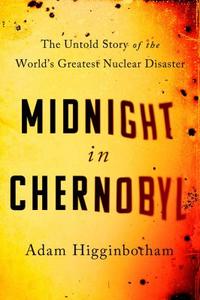 Midnight in Chernobyl: The untold story of the world’s greatest nuclear disaster
Midnight in Chernobyl: The untold story of the world’s greatest nuclear disaster
by Adam Higginbotham
The full story of the Chernobyl catastrophe.
In April 1986, a massive accident destroyed a reactor at the Chernobyl Atomic Energy Station near the town of Pripyat, now a ghost-town tourist destination, in Ukraine. The disaster sent a radioactive cloud across the Soviet Union and Europe, triggered pandemonium and coverups, involved thousands of cleanup workers, and played out at a cost of $128 billion against the secrecy and paranoia of Soviet life at the time. In this vivid and exhaustive account, Higginbotham (A Thousand Pounds of Dynamite, 2014), a contributor to the New Yorker, Wired, GQ, and other publications, masterfully re-creates the emotions, intrigue, and denials and disbelief of Communist Party officials, workers, engineers, and others at every stage. He takes readers directly to the scene: the radioactive blaze, the delayed evacuation of residents from the apartment buildings in “workers’ paradise” Pripyat, the treatment of the injured, and the subsequent investigation and “show trial” of scapegoats in a tragedy caused by both reactor failings and operator errors. Drawing on interviews, reports, and once-classified archives, the author shows how the crash program of Soviet reactor building involved design defects, shoddy workmanship, and safety flaws—but made “sanctified icons” of arrogant nuclear scientists. Higginbotham offers incisive snapshots of those caught up in the nightmare, including politicians ignorant of nuclear physics, scientists “paralyzed by indecision,” doctors treating radiation sickness, and refugees shunned by countrymen. We experience the “bewildered stupor” of the self-assured power plant director, who asked repeatedly, “What happened? What happened?” and watch incredulously as uninformed citizens hold a parade under a radioactive cloud in Kiev. At every turn, Higginbotham unveils revealing aspects of Communist life, from the lack of proscribed photocopiers to make maps for responders to the threats (shooting, relief of Party card) for failure to obey orders.
Written with authority, this superb book reads like a classic disaster story and reveals a Soviet empire on the brink.
Kirkus – one of 2019 best books
Tom Igoe’s notes: Notes on Midnight in Chernobyl
Harris Hester and Tom Igoe have scheduled a virtual meeting for Wednesday, March 18 at 10:00 AM to discuss Midnight in Chernobyl. Rick Agresta is setting up an audio/video link using Zoom. All he needs is your email, which if you replied to me in the last few days, you should be on the list below. If you are not on the list and would like to participate please email him directly – richard.agresta@gmail.com.
